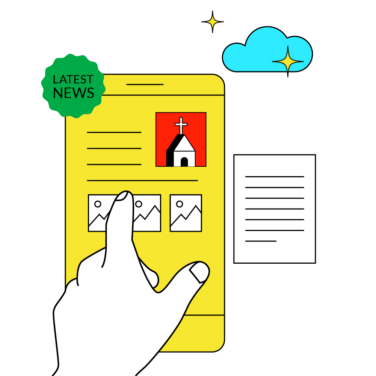One of the first 'paid staff' positions I accepted post-bible college was a part-time gig at Elora Road Christian Fellowship as church web director. (Was I qualified, strictly speaking? Well, I was passionate and more tech-savvy than anyone else on staff, so... yes? ) I was responsible for managing our church's online presence. I didn't have access to any helpful church website templates... and it showed. Truthfully, things were a mess:
- Hours were wasted trying to design something from scratch that still didn’t look professional.
- Important church information, like service times and events, wasn’t easy to find, frustrating both newcomers and regulars.
- Keeping the website updated was a hassle because the design wasn’t user-friendly or adaptable.
I faced these challenges because I didn’t have a reliable church website template to guide me, and it made everything harder than it had to be. In the years since then, I've worked on many a church-website.
So, to help YOU avoid years of wandering the wilderness, I’ve put together this list of church website templates that are designed specifically for churches. These templates (and the powerful church website building tools that power them) will help you save time, keep your website looking polished, and make sure your congregation stays informed and engaged.
5 Reasons Your Church Website Matters
Your church website is an essential part of operations in your church. If your church doesn’t have a website, it’s almost as if you don’t exist. It matters what you have on your site and how easy it is to get the information your users are looking for. Compare the 19 best church website designs to find some helpful ideas for your new church website.
Some benefits of a good church website include:
1. Increased Visibility and Outreach.
Your website is your opportunity to get the word out about your church and to accomplish the “Great Commission.” It will help you go beyond the physical building you meet in. It can be accessed anywhere in the world, which means your outreach is global. This is usually the first stop any newcomer will make before attending your church. Visitors, newcomers, and even those seeking faith can discover the church and hear the gospel through your website.
2. Easy Access to Online Sermons and Resources.
A church website is one way to access and archive past sermons and provide other resources. This is great for people who want to watch your sermons again or for those who missed them and want to catch up. You can also provide other tools, such as a mid-week devotional, podcasts, or Bible study material.
3. Encourages Online Giving.
Online giving is often the preferred way to make donations these days. Your website must provide easy and secure ways to give, making it as convenient as possible for your donors. Remember, the greater your online reach, the further away your supporters might be. Don’t limit your giving options to in-person only; that may mean you will miss out on some donations.
4. Centralized Church Communication.
A good church website will be a hub for all church communication. You can post information such as service times, event calendars, and announcements. This reduces the need for constant verbal reminders and emails, making it easy for members to stay updated and involved.
5. Improved Community Engagement and Connection.
Similar to how a church connection card can improve engagement in your church foyer, your online presence can be useful for building community and connection in your church through features like prayer request forms, blogs, and social media integration. This can help foster a sense of connection outside regular services. And, there are some great church connection card templates available as well!
Crucial Features Your Website Template Should Include
Every church is different, so your website will be unique to your church. However, there are a few key features that every church website needs.
- Sermon Hosting and Media Galleries: Include a section to upload past sermons, which can be in video, audio, or written formats. This helps those who missed services catch up and can serve as an outreach tool. Categorization by topic, date, or series is helpful for easy browsing.
- Donation Integration: Your website needs secure online donation software to make it easy for members to give tithes and offerings, support missions, or contribute to specific causes. The best church-giving software should be simple, secure, and offer recurring giving options.
- Event Calendars and Announcements: A well-organized events calendar allows members and visitors to stay updated on upcoming events, Bible studies, youth activities, or community outreach programs. The ability to register for events or sign up for notifications is a bonus.
- Ministry Pages: Dedicated pages for different ministries, such as children, youth, and outreach, help people connect with specific areas of church life. It’s a great way to showcase all that’s happening at the church for newcomers. These pages can share the mission of each ministry, upcoming activities, and how to get involved.
- About Us Section: This is your opportunity to show what makes your church special and why everyone should attend. Focus on the heart of your church. What are your core beliefs and mission? Who is on your leadership team? What is the history of your church? Let your church’s personality shine.
15 Excellent Church Website Templates for 2025
Using a template is a great way to kick-start your design for your church website. There are countless options out there. The right one is waiting for you.
Part I: 5 Free Church Website Templates
- Wix is free to use, but there are limitations unless you must upgrade to a premium account to access certain features and eliminate their ads. You can choose from multiple church templates, each with a different vibe.
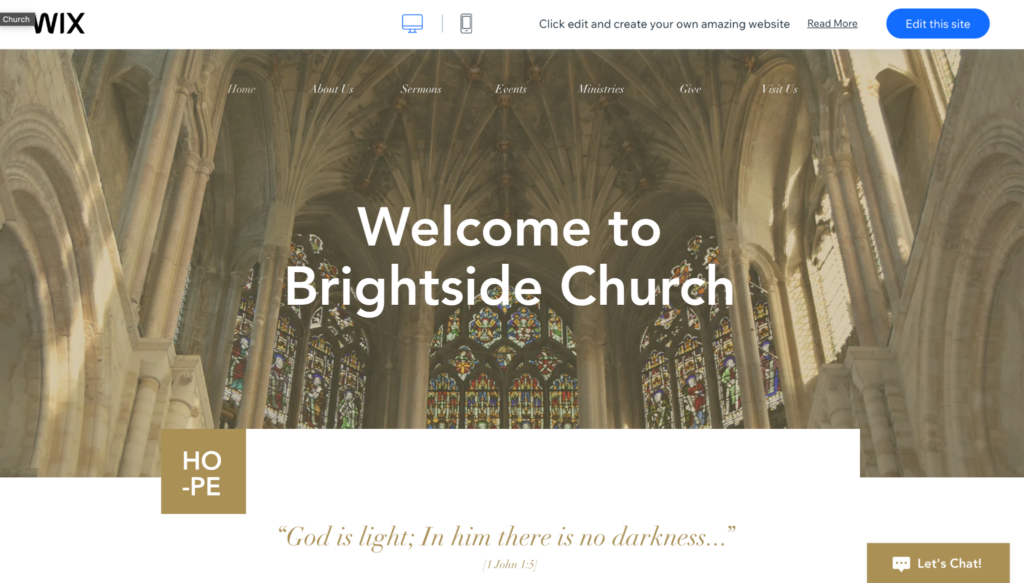
- WordPress offers a free theme called ExS Church that is responsive and customizable, designed specifically for churches. It features a clean layout for sermons, events, and donation options.
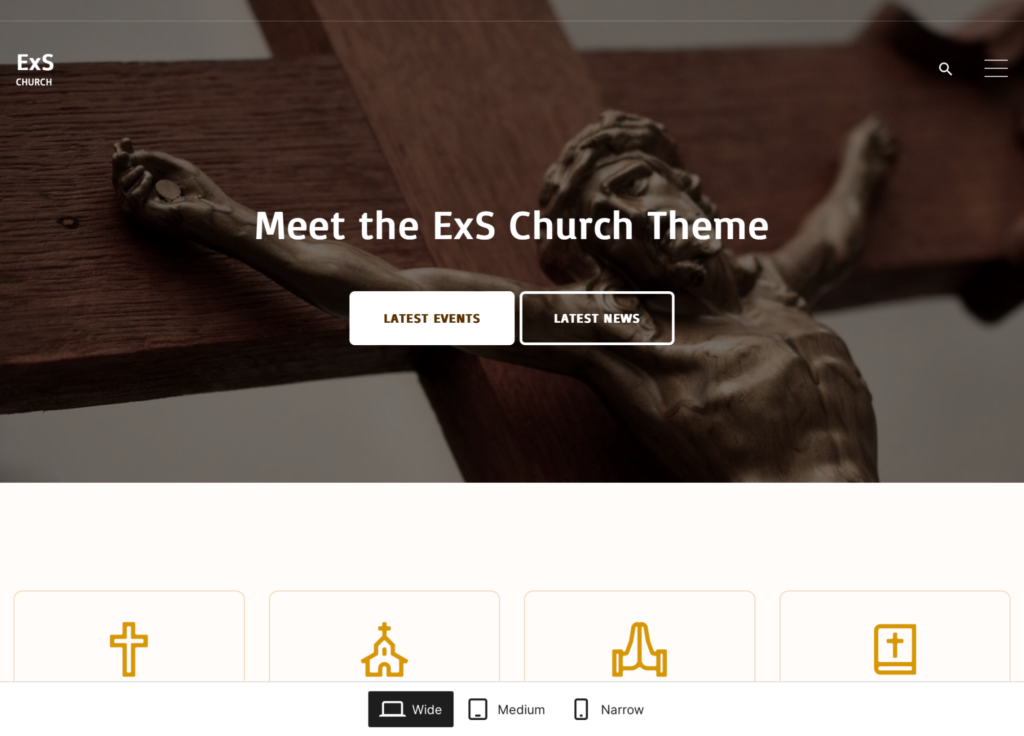
- Wix has another theme called Community Church. It is fully customizable with drag-and-drop functionality, making it easy to create a welcoming and informative website for congregations of any size.
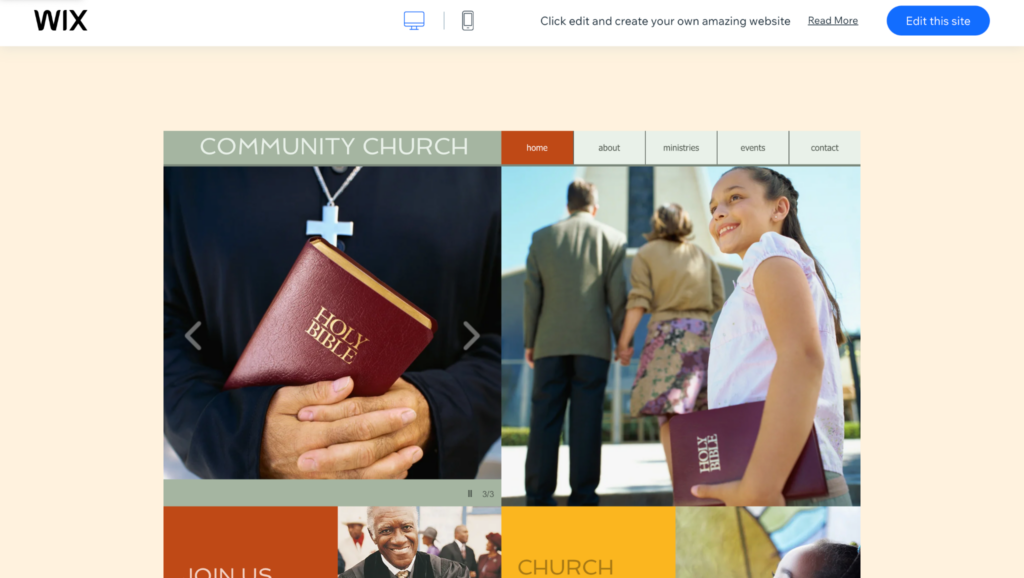
- From WordPress, Church Services is responsive and visually pleasing. It is customizable and includes a section for uploading and sharing sermons.
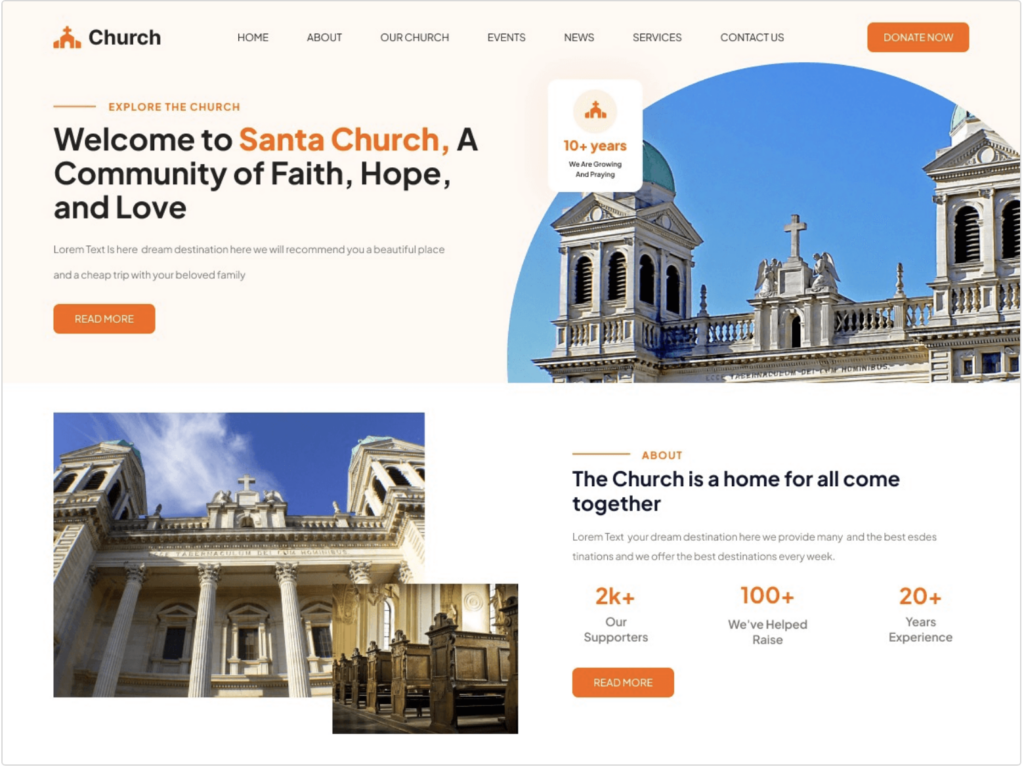
- Another church template from Wix that has the main features you’re going to need. It is free to use, but you cannot have a custom domain name unless you upgrade to premium.
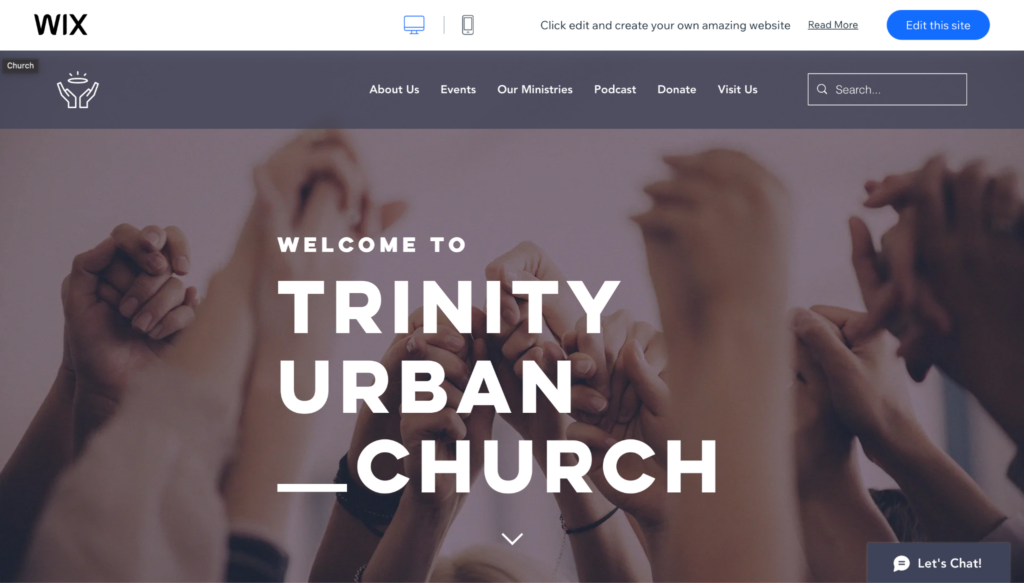
Part II: 5 Premium Church Website Templates
- Astra has a website template called “Church” that, surprisingly, is tailored specifically for churches which includes a sermon archive and events page. It integrates with many of the leading page builders.
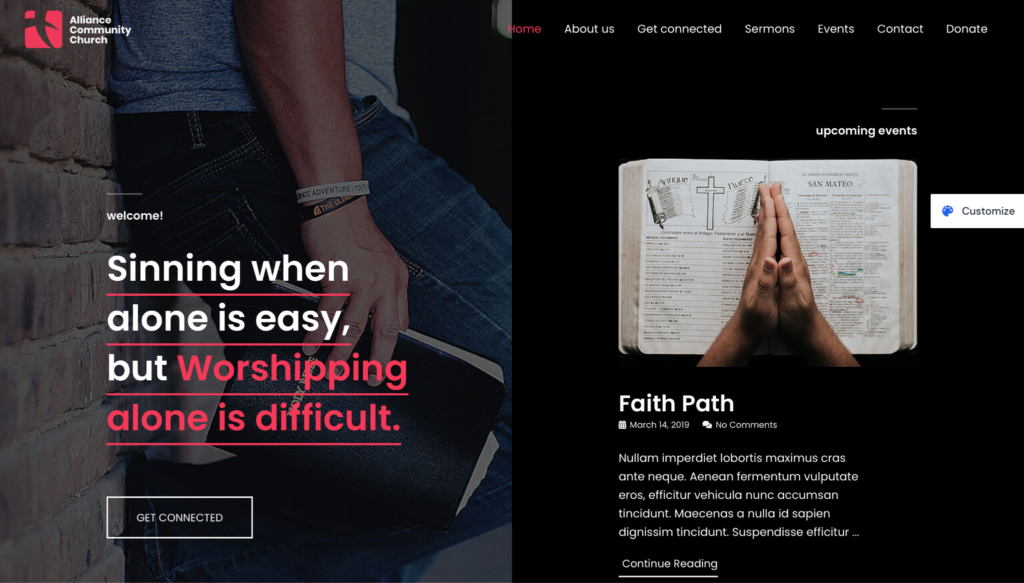
- Squarespace offers great usability with beautiful designs. If your team chooses squarespace to build its church website, you can purchase a template that is made for churches through third party designers, such as Church Design Co, like this one called Community Church Squarespace Template.
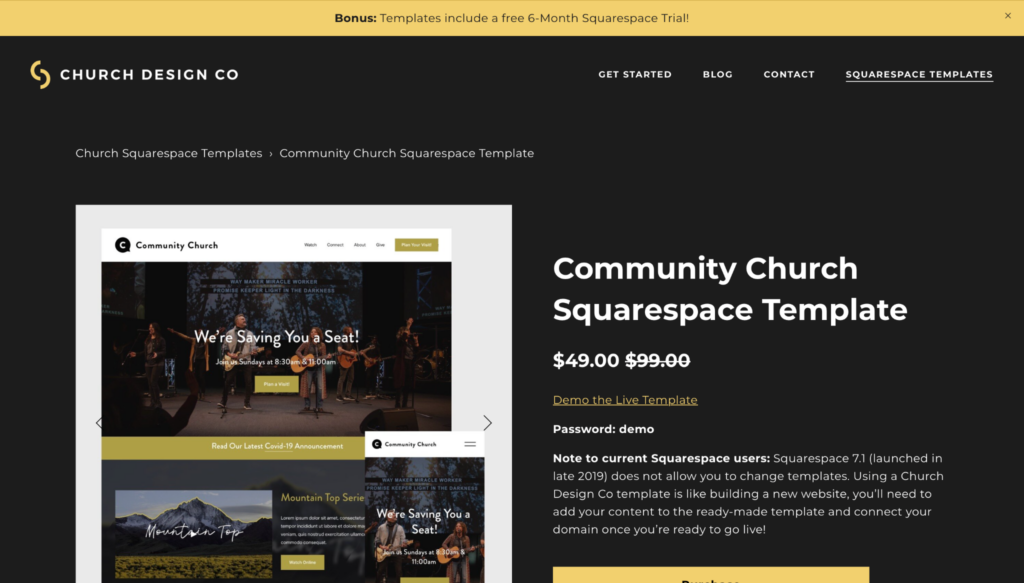
- Another template from Church Design Co. In three easy steps, you can have your website up and running: purchase a template, personalize it with your content, and then launch! Here is another option called Bold Church Squarespace Template.
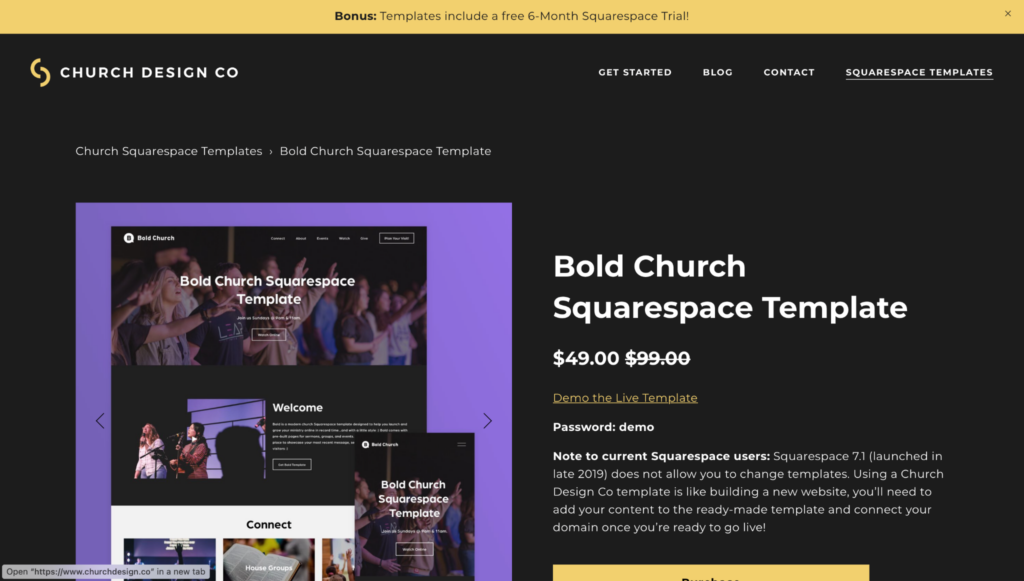
- Kergyma from Organized Themes is a WordPress template and offers unique features like sermon podcasting, integrated media support for video and audio, and customizable page layouts, making it ideal for churches looking to share their messages online effectively.
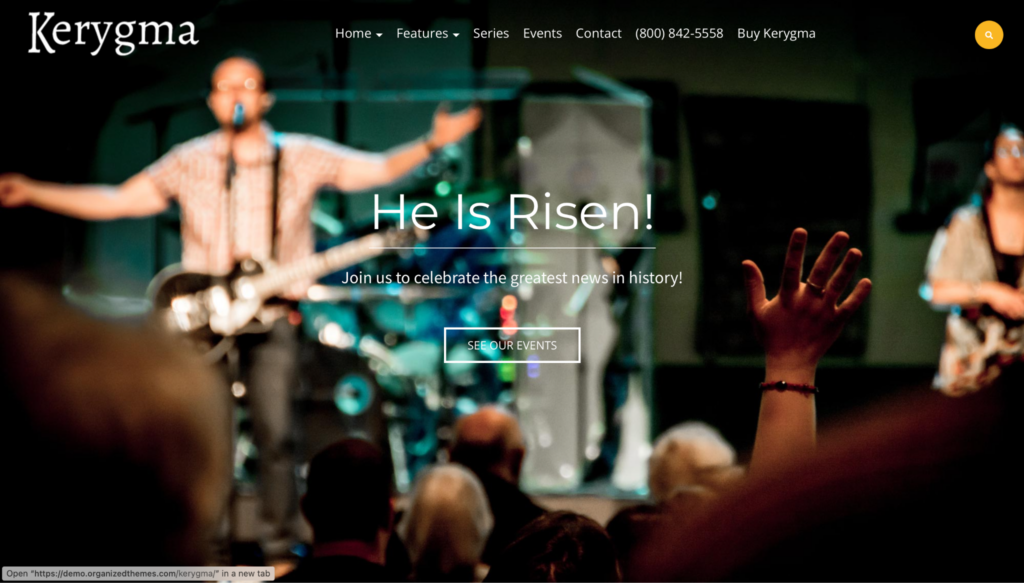
- Astra offers another premium template called Faithful Gathering. It stands out due to its elegant and modern design, focusing on user engagement with features like event scheduling, sermon sharing, and donation integration.

Part III: 5 Customizable Templates for Specific Needs
- ChurchThemes.com has multiple templates that work with WordPress and are highly customizable. For example, Exodus allows you to use your fonts, logos, and other design themes specific to your church. And it’s responsive for desktop and mobile access to your site.
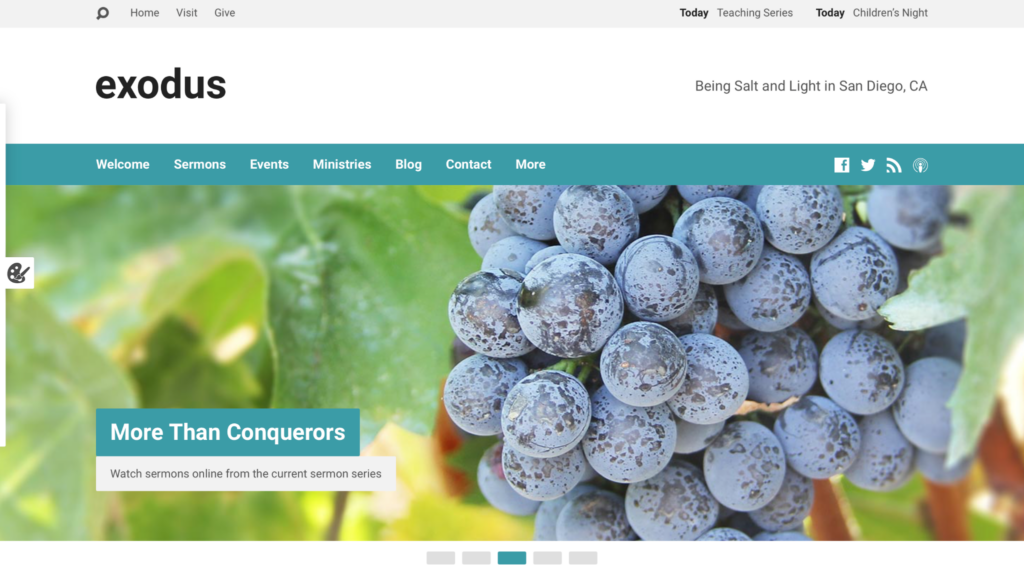
- This option is called Jubilee from ChurchThemes.com and has a unique look that is different from a lot of church templates I have seen before. It comes with a plugin designed specifically for church needs.
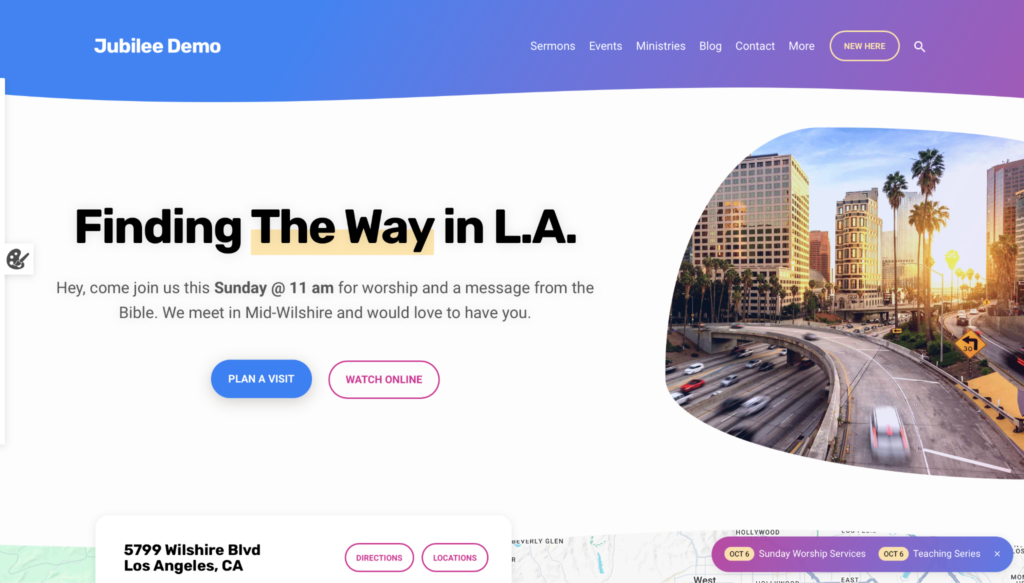
- Nucleus offers a free trial, but after that, the cost starts at $99/month for their comprehensive church website, communication, and giving platform. Its user-friendly interface simplifies church administration while enhancing digital engagement and communication with members.
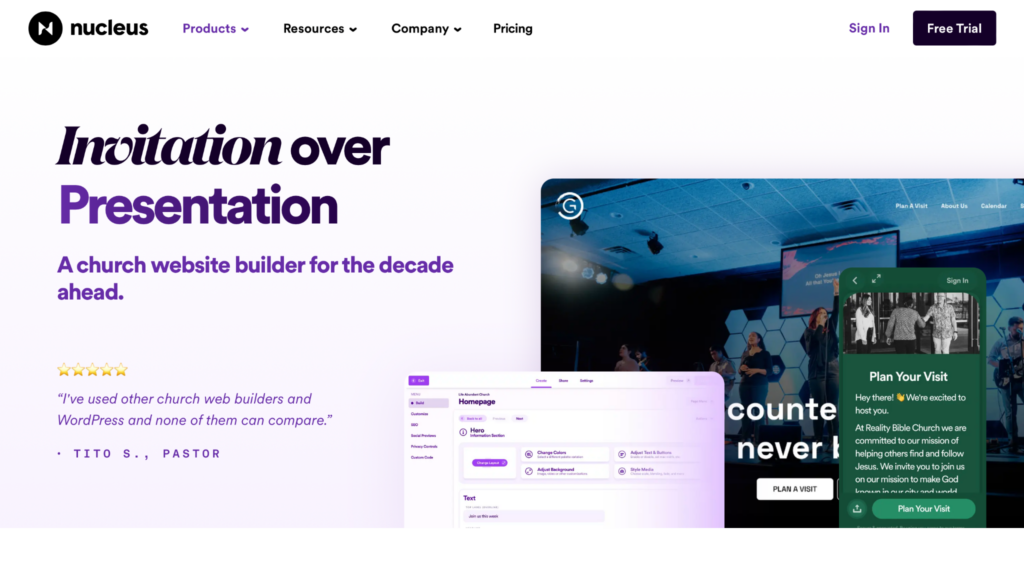
- ThemeForest offers some great options that are fully customizable. For example, “Grace” is a church and religion theme that is a WordPress theme that is compatible with Elementor, WooCommerce, and WPML.
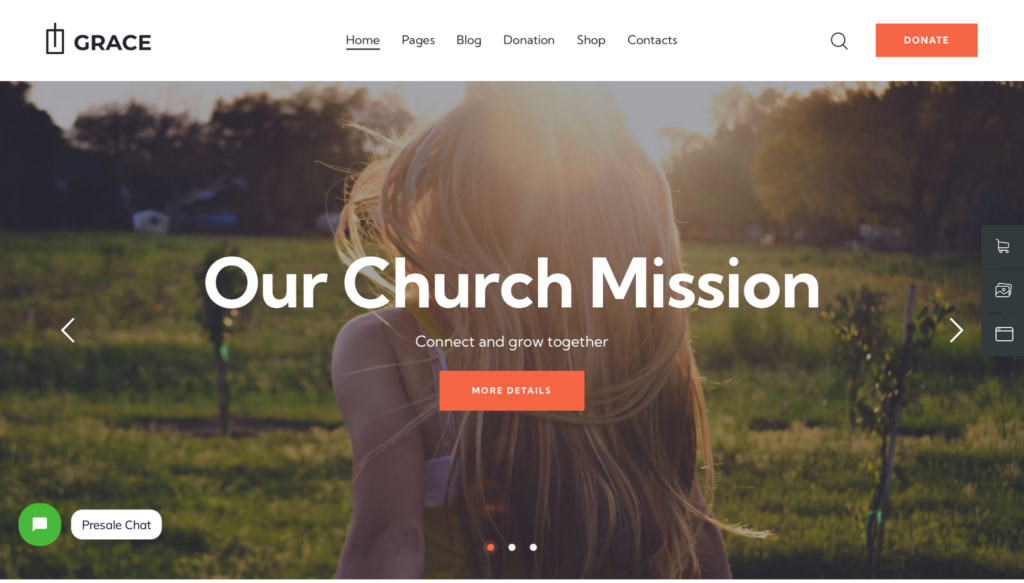
- Adore Church is a responsive HTML5 church template. You might want to use the Adore Church for its modern and visually appealing design, which is fully responsive and tailored specifically for churches, ensuring a great user experience across devices.
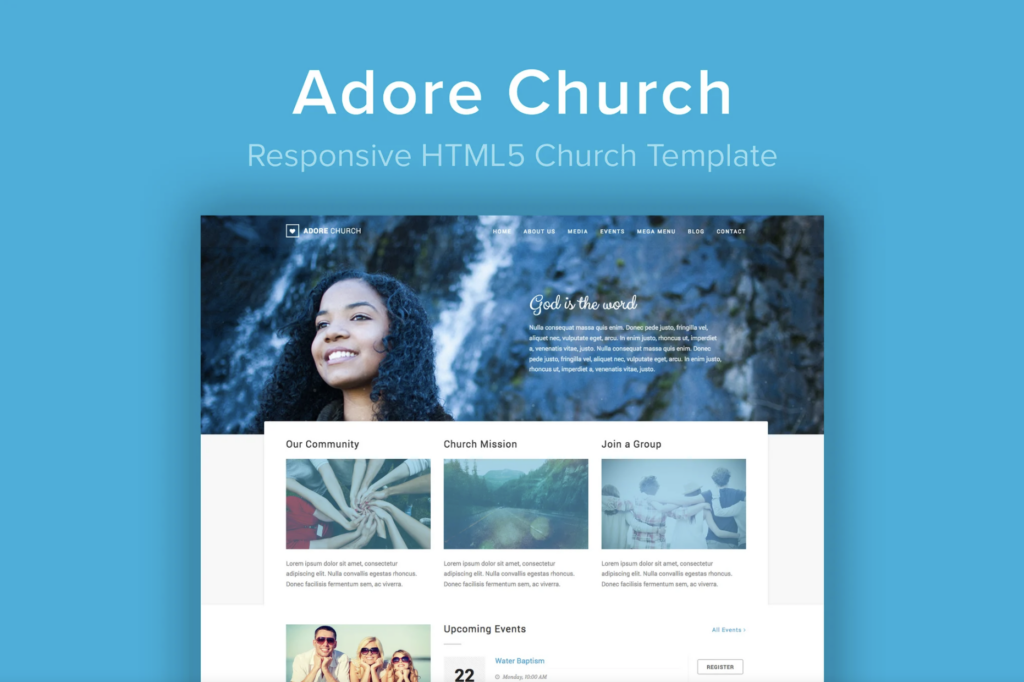
Best Practices: Choosing The Right Template For Your Church
Not all website templates are created equal. Here are some best practices to consider as you make your choice.
Make sure it fits your budget.
You can spend a lot of money on a church website…like, A LOT! But that’s probably not ideal for your church that operates on limited funds and needs to follow a budget. So make sure you work alongside your church finance committee so you know how much money you are working with when choosing the right church template. It may be a bit of a balancing act to find one with the right features for your needs while still keeping costs down.
Prioritize User-Friendliness
Easy navigation is key for you, as the website administrator, but also for your users who will be visiting the site once it’s live. Look for templates with intuitive, drag-and-drop builders, especially if you don’t have much experience with web design. A user-friendly template ensures that you can update content quickly and that visitors can easily find important information like service times, sermons, and events.
Look for Customization Flexibility
Pick a template that allows for easy customization of fonts, colors, layouts, and images so you can match the design with your church’s brand, vision, and personality. A rigid template may look good initially, but it could limit your ability to adjust the design as your church grows or changes.
Ensure Mobile Responsiveness
Over 60% of internet traffic is from mobile devices, so it’s crucial to select a template that automatically adapts for mobile or desktop usage. If you have ever been on to a website that doesn’t play nice with your phone then you know how painful it is to use. It’s nearly impossible to find what you need. Test the template’s mobile functionality to make sure it looks good and is easy to navigate on all devices.
Check for Built-in Sermon and Event Features
Choose a template with built-in functionality to host sermons (audio, video, or written). Without a sermon management system, you’ll need to add plugins or third-party tools. Similarly, an integrated event calendar that lets members view and register for events is a great time-saver.
Evaluate Support and Updates
Choose a template that is regularly updated and supported by the developer or platform. This ensures the template stays compatible with the latest web technologies and security standards. If the template comes with ongoing support, it will be easier to troubleshoot or get help when needed.
Setting Up Your Church Website: Step-by-Step Guide
Now that you have chosen a template, all that’s left is to create your site. Follow the steps below to get started.
1. Define the Purpose and Goals of the Website
This is the brainstorming part where you get to dream big about what you want your site to be about. Start by asking yourself some important questions:
- How can you add your church’s flair and personality?
- How do you want your visitors to feel when they visit your site?
- Why will they be visiting your site and how do you make it easy for them to find the information they’re looking for?
2. Select a Hosting Service
The hosting service is the platform that you will build your site through. For hosting platforms, remember that some are easier to use than others. Wix and Squarespace are the easiest, ideal for non-technical users looking for simplicity. WordPress.com offers more flexibility with some learning curve but is still user-friendly. SiteGround and Bluehost offer more control and customization but they require a greater level of technical understanding.
3. Choose a Domain Name
The domain name is the website address you will enter to access the site once it’s live. You need a domain that is memorable and easy to spell. Include the church name if possible and consider including the location. For example, Calvary Baptist Church in Detroit might choose to use the domain CalvaryBaptistDetroit.com. Avoid hyphens and numbers and check with social media to see if it’s available for consistency between platforms.
4. Add Essential Pages and Content
Every website is different, depending on the specific needs and characteristics of a church. In general, these are the main pages that you need to have and make easy to find on your site.
- Homepage: The main page of your website should include service times, a welcome message, and an introduction to your church.
- About Us: Share your church’s mission, vision, and beliefs. Introduce your leadership team with bios and photos
- Sermons: Create a section where visitors can access recent and past sermons (videos, audio, or written).
- Events: Set up an events calendar with information about services, Bible studies, and special events. Make sure this section is updated regularly to remove anything that is out of date.
- Contact: Include your church’s address, phone number, email, and a contact form. You might also add a map for easy directions.
- Online Giving: Add a secure online donation page with recurring giving options.
- Ministries: Highlight your church’s ministries (e.g., youth, children, outreach) with pages that explain how people can get involved.
5. Customize the Design and Layout
Incorporate your church brand into the site template, using your specific church logos, colors, and photos. It should be visually pleasing and easy to navigate. Use short call-to-action items (or invitations) for them to click through the site. Some examples of buttons might be “Visit Us”, “Give Online”, or “Make a Prayer Request”.
6. Test, Launch, and Promote the Website
Before launching the site, check all the pages on both desktop and mobile and look for formatting issues. Test the buttons and links to make sure it’s working smoothly. Now you’re ready!Launch the site and spread the word in person, in church bulletins, and online through social media. Use church connection card templates to collect visitor information and encourage members to visit the site and to share it with others.
A Few Final Thoughts:
Having a great church website is the foundation for a thriving and growing online church presence. It’s necessary in today’s culture. But don’t stop there. Take your website to the next level by incorporating these important strategies and tips.
1. Use Analytics to Improve Church Website Engagement
Using analytics on your website will track performance and gain insight into the visitors to your site. Google Analytics will help you understand what’s working and what’s not. It will tell you where your visitors are going once they find your site, how long they stay and when they leave, and more. You can make informed decisions to improve website engagement and better serve your church members and new visitors.
2. Match the Website to Your Church’s Vision and Brand
Your website is an extension of the front foyer of your church. You want your visitors to know where they are when they arrive and what your church is like. Use consistent visuals and branding throughout the site, make it authentic to your church, and tailor it to your target audience.
The navigation should be easy and purposeful. Design it for easy engagement with options like watching past sermons, event registration, and a prayer request form.
3. Prioritize Ease of Use and Flexibility
Firstly, choose a responsive template, meaning it adjusts seamlessly to different screen sizes (desktops, tablets, and smartphones). This enhances user experience and accessibility for all members. Structure your website's navigation so that users can easily find key information. Limit the number of menu items to avoid overwhelming users. A dropdown menu for subcategories is a great way to keep the navigation clean and organized. Use multimedia elements, like videos and images, to make the content more visually appealing and engaging.
4. Be Intentional about Search Engine Optimization (SEO)
You may be tempted to ignore this part of managing your website, but don’t skip this. SEO is how you improve your site’s ranking with Google. Essentially, better SEO means that you are increasing your target audience and being found by more people who are looking for what you have to offer.
Want to get more website help, right to your inbox?
Subscribe to our newsletter designed for pastors and church leaders. Receive encouragement, insights, and resources just for you!


